Question:1
What is the meaning of the term “driving at a reasonable speed”?
Category : Safety
Question:2
Driving at dark with the high beam turned on might:
Category : Safety
Question:3
Which of the following sentences is the most correct, as regards to the following picture?
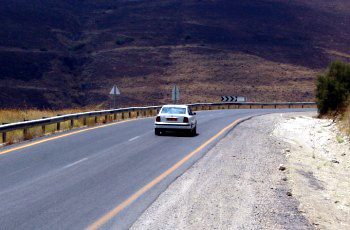
Category : Safety
Question:4
What is the correct sentence?
Category : Safety
Question:5
Keeping a safe distance from the vehicle in front of us is required:
Category : Safety
Question:6
What is the problem in the following picture?
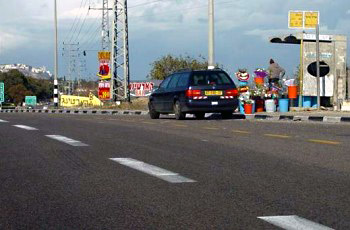
Category : Safety
Question:7
According to the picture, what limitation is faced by the green (commercial) pick-up truck that wishes to turn right?
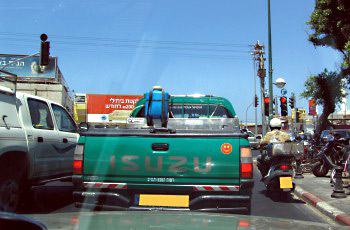
Category : Safety
Question:8
What might be the cause of loss of control of a vehicle?
Category : Safety
Question:9
What risk is a driver facing while making a right turn?
Category : Safety
Question:10
How are you required to conduct yourself according to the following picture?
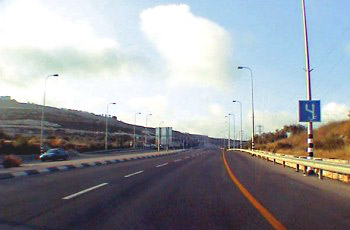
Category : Safety
Question:11
How would you avoid hitting the pedestrian in the picture?

Category : Safety
Question:12
How can a correct grip of the steering wheel help to control the vehicle and to keep it stable?
Category : Safety
Question:13
Can a short refreshment break whilst driving lessen the driver’s tiredness?
Category : Safety
Question:14
How is it possible to reduce the centrifugal force applied to the vehicle whilst driving?
Category : Safety
Question:15
How are you required to conduct yourself according to the following picture?
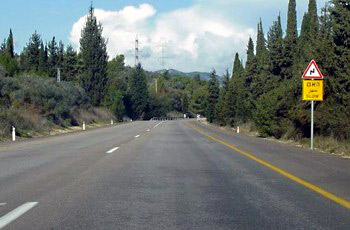
Category : Safety
Question:16
You are driving in a two-lane one-way street and try to overtake the vehicle driving in front of you. The main risk in deviating to the left is:
Category : Safety
Question:17
The white vehicle (1) and the silver vehicle (2) at the intersection, intend to enter the same road. Which of them is obliged to give right of way?
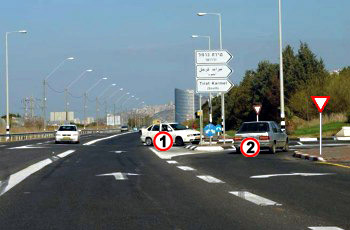
Category : Safety
Question:18
What are the reasons for a vehicle skidding on a road?
Category : Safety
Question:19
What is the order of actions the driver needs to take before slowing down?
Category : Safety
Question:20
In an automatic gearbox, what is a driver required to do before shifting from the P gear to any other gear?
Category : Safety
Question:21
When you are driving behind another vehicle:
Category : Safety
Question:22
What is required in order to change lanes without causing any disturbance or risk?
Category : Safety
Question:23
Which factors affect the driver’s decision to shift to higher or lower gear?
Category : Safety
Question:24
Why is a driver required to adjust his sitting position before starting to drive?
Category : Safety
Question:25
What are the specific risks and problems in crossing intersections?
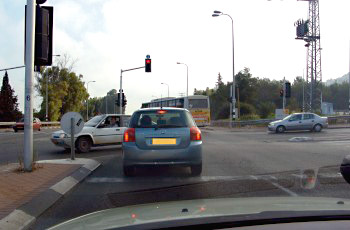
Category : Safety
Question:26
What should a driver do when the road has bumps and cracks?
Category : Safety
Question:27
How should a driver conduct himself if one of his tires punctures while driving?
Category : Safety
Question:28
In order to avoid hitting a vehicle that makes a sudden stop in front of you:
Category : Safety
Question:29
What is a “blind spot”?
Category : Safety
Question:30
In order to start driving, what is the action the driver has to take before releasing the hand-brake in a vehicle with automatic transmission?
Category : Safety

